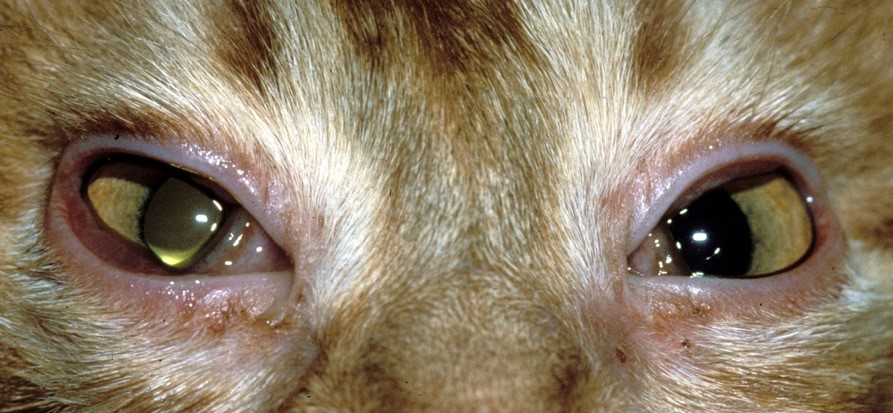The most common cause of conjunctivitis in cats is feline herpes virus (FHV-1). Most cats are exposed to the feline herpes virus within the first few weeks of life. At the time of exposure, kittens may develop conjunctivitis (Figure 1).

Viral conjunctivitis is usually self-limiting and often does not require treatment. If the symptoms do not resolve, treatment with a topical and/or oral antiviral is indicated. Idoxuridine 0.1% and Cidofovir 0.2% are the two most common topical antiviral medications used in cats. Both are compounded and generally used twice daily. Additionally, Famciclovir is an oral antiviral medication that is safe to use in cats. The recommended dose is 125mg to 250mg PO BID, however dosing up to 90mg/kg PO TID is safe in cats. Topical and oral antiviral medications can be used together. Because antiviral medications do not kill the virus, it can take several days and up to 1 to 2 weeks to note significant improvement of clinical signs.
Antiviral medications slow viral replication allowing the immune system to control virus shedding. Slowly tapering viral medication is recommended to limit recrudescence. Flare-ups occur because the feline herpes virus remains latent in the cornea and the trigeminal ganglia.
The immune system keeps the virus controlled, therefore, any insult to the immune system allows the virus to activate. Herpes conjunctivitis is often noted in young cats while the immune system is maturing and in older cats when the immune system is decompensating. Herpes flare-ups are more prevalent in cats with underlying diseases such as FeLV, FIV, kidney, heart, dermatologic, cancer, respiratory, and gastrointestinal.
Treatment with any type of steroid by any route increases the risk of herpes virus reactivation. Herpes conjunctivitis tends to be more severe in cats treated with steroids and therefore these cats are more difficult to manage. Topical antiviral medication can be used long term in cats treated with steroids or other immunomodulating or immunosuppressive drugs. Topical NSAIDS (flurbiprofen and diclofenac) and topical steroid should NOT be used in cats. Both classes of drugs slow healing, predispose for infection, and will worsen a herpes flare up.
Some cats with herpes conjunctivitis will develop a bacterial infection typically with Chlamydophila spp, or Mycosplasma spp. These cats often develop significant mucoid ocular discharge as well as upper respiratory signs. Topical and/or oral antiviral medication along with topical and oral antibiotics are indicated. Topical ofloxacin and/or topical Terramycin BID to QID and oral azithromycin 10mg/kg PO SID are recommended. Treatment with azithromycin is typically for three weeks.
Bartonella henselae can also cause feline conjunctivitis as well as uveitis, cataract and blepharitis (Figure 2). Bartonellosis is a zoonotic disease that is transmitted to cats from fleas. People are infected by a cat scratch. Treatment for Bartonellosis is 3 to 6 weeks of oral azithromycin (10mg/kg PO SID) or doxycycline (10 mg/kg PO SID). Retesting 6 months after treatment is recommended to determine treatment efficacy.
If you have a patient showing signs of viral or bacterial conjunctivitis, referring for specialty ophthalmic care is recommended when prior treatment is ineffective. As part of the consultation, we will complete diagnostic testing to confirm the diagnosis and prescribe appropriate medication therapy. Rechecks examination can occur at your office to assess patient progress. Through such collaboration, we can achieve the best possible patient outcome.
